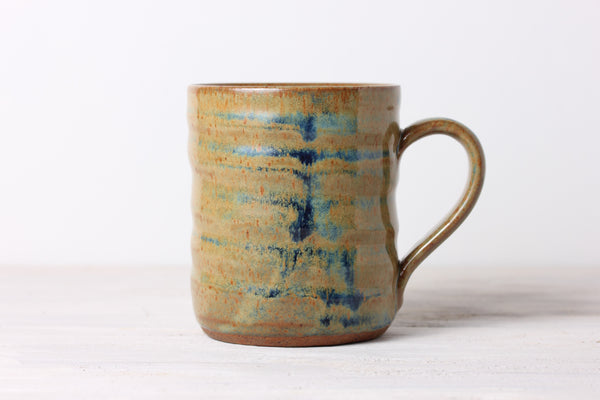What do kiln vents do?
Kiln vents come in various forms, they aim to remove air from the kiln atmosphere. Some types of ventilation are attached over the top of the kiln, others suck air out of the bottom. Electric kilns are more likely to need ventilation as the radiant heat doesn’t move much air naturally.
Do you need kiln ventilation?
There are two main reasons for using a ventilation system.
- Remove unwanted gases from the studio space. During a firing there are gases released that can be harmful to breathe. By using a vent many of these can be extracted to the exterior.
- Improve kiln atmosphere by getting more oxygen around ware. This can apparently improve colour responses and promote carbon burnout in bisque firings.
I decided to build a kiln vent to try and eradicate some pinholing problems I was having. Pinholing can be caused by insufficient carbon burnout during bisque firing. My workshop is an external garage and I rarely occupy it while the kiln is firing. This meant the removal of gases from space was just an added bonus.
Kiln vent resources
During my research I found a really helpful article at Blue Willow. I was really happy to find someone had done it before and even got some help from one of the authors. I recommend you read those articles too if you are planning to build a vent. There were a couple of design points I tried to improve on with my version.
How I made my kiln vent

I already had an extractor fan fitted to the wall of my garage studio. I decided to use it as part of my extraction system. The inline style fans would probably provide better suction but I was trying to keep costs down.

To be able to connect the tubing I had to do a little woodwork, and fit a 100mm metal flange. I bought this separately from the other ducting parts. The main order of parts came from this ducting supplier. They were the cheapest I found in the UK, and delivered pretty quickly. I haven’t used a few of the parts as my design changed during the build.

The ducting fits together quite nicely but gloves are needed, I cut my fingers on sharp edges straight away! There are a couple of changes I made to the bypass box compared with the other articles I linked to.
Firstly, the part that is pressed against the underside of the kiln has a flange piece. Other designs just have the sharp end of the metal tubing pressed against the brick. I thought my flange would minimise any damage to the soft brick as the kiln expands during heating. It may also form a slightly better air seal to the kiln floor.

The second major difference is the bypass box part. I read about the struggle other people had propping up a 90 degree tube as the bypass box. By using the T-junction section instead I’ve been able to prop it without too much trouble.
Drilling holes for kiln ventilation
I was a bit scared about this part! Although my old kiln was bought on eBay for peanuts, I didn’t want to ruin it. My kiln is around the same size as the authors of the blue willow article so I used that as a guide. To begin with I used a bit of wood instead of the kiln floor to test how many holes were needed. I ended up drilling two ¼” holes in the kiln floor and three ¼” holes in the end of the bypass box. These mix room air with the kiln air to cool it during extraction.

To get the bypass box under the kiln I had to take the kiln off the stand and put some bricks underneath it. This seems pretty stable, though not ideal.
I was planning to use some hanging clips, threaded rods and some springs to support the kiln vent. The kiln expands and contracts during a firing cycle. Therefore some movement of the vent is needed to keep a tight air gap. I’m not sure how much the floor actually moves on a small kiln like this but I wanted a nice solution. As my springs haven’t arrived yet I rigged a temporary solution. Some bricks with old hacksaw blades under tension provide the spring needed to push the box against the kiln floor.

Testing the kiln vent
With everything assembled I was able to test the suction.
The commercial kiln vents recommend drilling separate holes in the lid for air intake. I decided to try using just the hole I already had. There is a hole around 1″ diameter in my lid, the same size as the side peeps holes.
With both side peeps plugged, the top hole just sucks a match flame down into the kiln. This test was done with the kiln off. I also tested with the kiln on and the suction is far less, I suppose this is to be expected. Maybe I will need more holes in the kiln floor depending on the results of my first firing.

